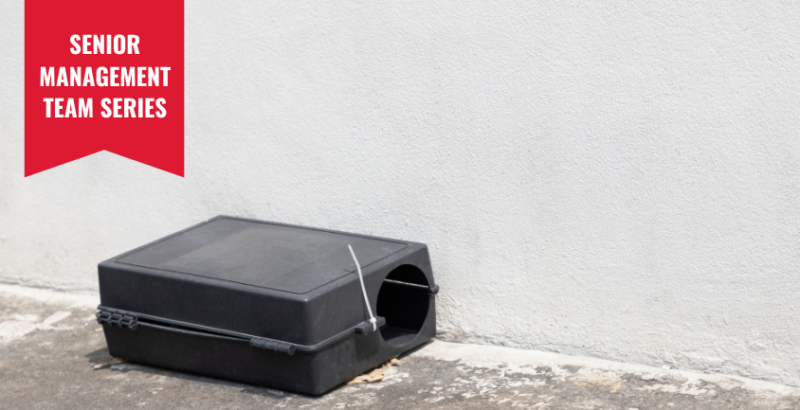May 2, 2023 – The use of rodenticides in pest management has been a common practice for many decades. However, with the advancement of both rodenticides and scientific understanding, it is crucial for the pest management industry to evolve towards a higher level of reasoning. With increasing regulation and environmental concerns about non-target exposure we must change our methodology.
When it comes to rodenticide, I propose a new golden rule. “There must always be a why.” What this means is, it is essential to have a clear and specific reason for the placement of all rodenticides. Gone are the days of replacing baits in every station with the reasoning that a rodent may, at some point, enter a station and interact. As pest management professionals we must be able to interpret data and analyze down to the specific station, if a bait placement is necessary.
Additionally, mechanical monitoring devices, such as snap traps, bait stations with non-toxic monitoring blocks and multi-catch devices can be used to effectively control rodent populations without the need for chemicals. These devices can be strategically placed in areas where rodent activity is suspected, and their use can be monitored and adjusted as needed. This gives the additional benefit of allowing professionals to identify species of rodent populations and tailor corrective actions as needed. In many instances a trap will be more effective at preventing a rodent entering a structure than bait as it captures the rodent immediately. Similarly with non-toxic monitoring baits we are able to identify areas of activity and levels, due to bait consumption, and adjust accordingly.
It is important to note that while I believe exterior rodenticide use should be greatly reduced, I also believe that interior baiting should be greatly enhanced. It is my belief that we should shift our focus towards increasing the use of pulse baiting on the interior of buildings.
By decreasing the use of rodenticides on the exterior of buildings and increasing the use of pulse baiting on the interior, we can strike a balance between effective rodent control and environmental responsibility. This approach not only reduces the risks to non-target wildlife and pets but also minimizes the potential for secondary pest problems and the development of resistant rodent populations.
It is time for the pest management industry to evolve towards a higher level of reasoning when it comes to rodent control. The use of rodenticides should be specific and purposeful, and there should be a greater focus on non-toxic baits and mechanical monitoring devices. By adopting these practices, we can effectively control rodent populations while minimizing the risks to other animals and the environment.
By AJ Treleven, Director of Operations

